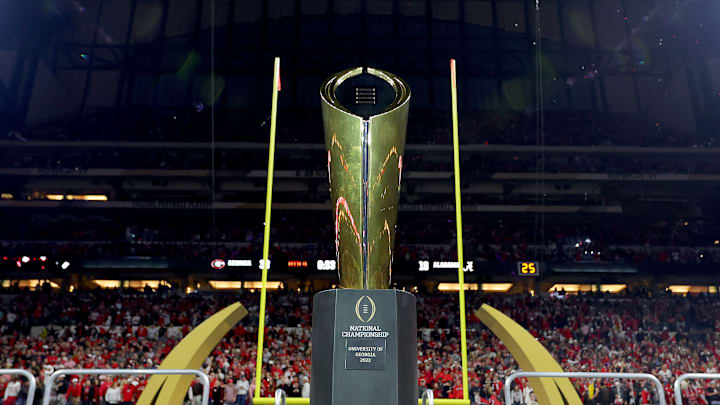It was long overdue, but thankfully, the day we have all been waiting for in college football has arrived. Apparently, nobody liked the four-team model of the old College Football Playoff format. It may have always accomplished what it set out to do, which is to give us the four best teams. Unfortunately, that is not what the general public wanted. What it actually wanted was everybody to have a chance at it.
So with that came rapid College Football Playoff expansion. The postseason field has tripled in size, going from the four best teams to 12. When it comes to those 12 teams, they fall largely into one of two buckets. Those would be the five highest-ranked conference champions, followed then by the seven next-best teams. There is a bit more to this model, but this is the basis for the 5-7 model here.
Admittedly, we may see this amended to 14 teams, or even 16 teams, in years to come. But right now, I think we all just need to shut up and see how this new format shakes out before we try to reinvent another on the fly. There are a lot of games to be played. After all, these are kids we are talking about playing in them. Then again, college football is big business, where many of its players make millions.
Let me now unpack what are the very important points about this new 5-7 model for the playoff.
College Football Playoff 5-7 model: What does this all entail for us fans?
Well, let's start by unpacking the five of the so-called 5-7 model. These five teams are designated as such for winning their respective conference championships. With there only being four Power Four conferences now, it almost certainly guarantees that the ACC, Big Ten, Big 12 and SEC will be getting at least one of its teams in annually. The fifth spot will be reserved for the Group of Five in most years.
Is there a way where one of the Power Four leagues get left out? Oh, absolutely. But that requires one of the Power Four leagues to have a season from hell and their perceived best team not winning its conference. You would essentially need a 10-2 ACC or Big 12 team to lose to an 8-4 squad in their conference's title bout to not get a team in. If that happens, two Group of Five champions will get in.
So to put a bow on those five teams, they will be the five highest-ranked conference champions based on how the College Football Playoff Selection Committee views them. The top four automatic qualifiers (AQ) will get a first-round bye to the national quarterfinals, where they will be assigned one of the six New Year's Six bowls, as they await their opponent. Most of them will belong to the seven...
So now that we have a firm understanding of what the five means in the 5-7 model, let's take a look at the seven. Those will be the seven next-best teams. They could be non-conference winners, they could be the sixth-best conference champion, they could be Notre Dame, they could be anything! That is the point of this group of seven teams. They are at-large bids for this new postseason format.
What is important to know is that Notre Dame can never get a first-round bye because the Fighting Irish do not play in a conference for football. They would be the favorite to win the ACC this year, but they can go 10-2 or better in most years and still likely get in as an at-large team. The last little thing I shall unpack is the postseason seeding based on this 5-7 model we have for the expanded playoff.
So the top four seeds (No. 1-4) will get first-round byes to the national quarterfinals, which will be played out at four of the previously labeled New Year's Six bowls. The other two will be reserved for the national semifinals. As is tradition, the national championship will be played at a predetermined neutral-site location. This could be at any venue in the country, even a stadium with an NY6 bowl.
To get inevitably get there, No. 5 will host No. 12, No. 6 will host No. 11, No. 7 will host No. 10 and No. 8 will host No. 9 at their home stadium for their first-round game. The No. 5 vs. No. 12 winner will face No. 4, the No. vs. No. 11 winner will face No. 3, the No. 7 vs. No. 10 winner will face No. 2 and the No. 8 vs. No. 9 winner will face No. 1, all of these national quarterfinals be at New Year's Six Bowl locations.
Now that we have a better feeling of what the 5-7 model entails, let's kick back and enjoy the games!
